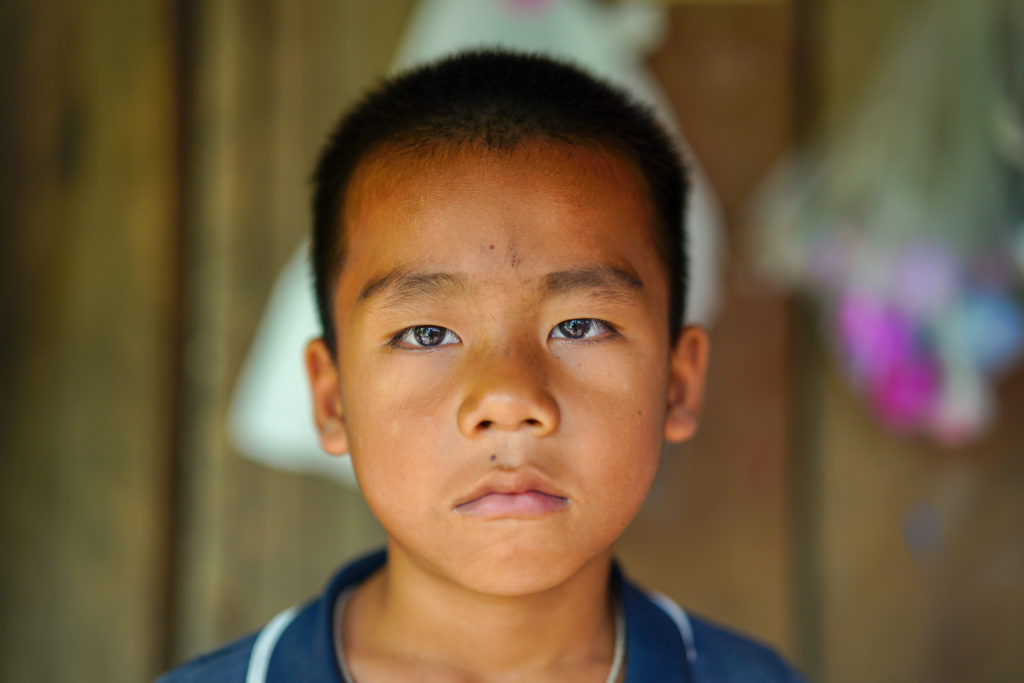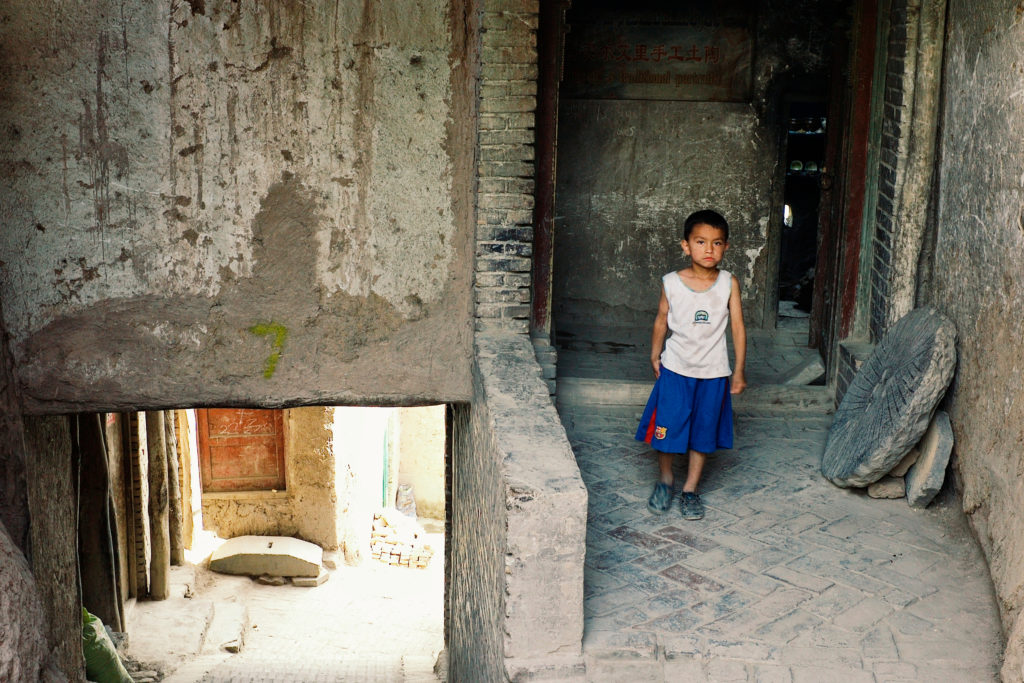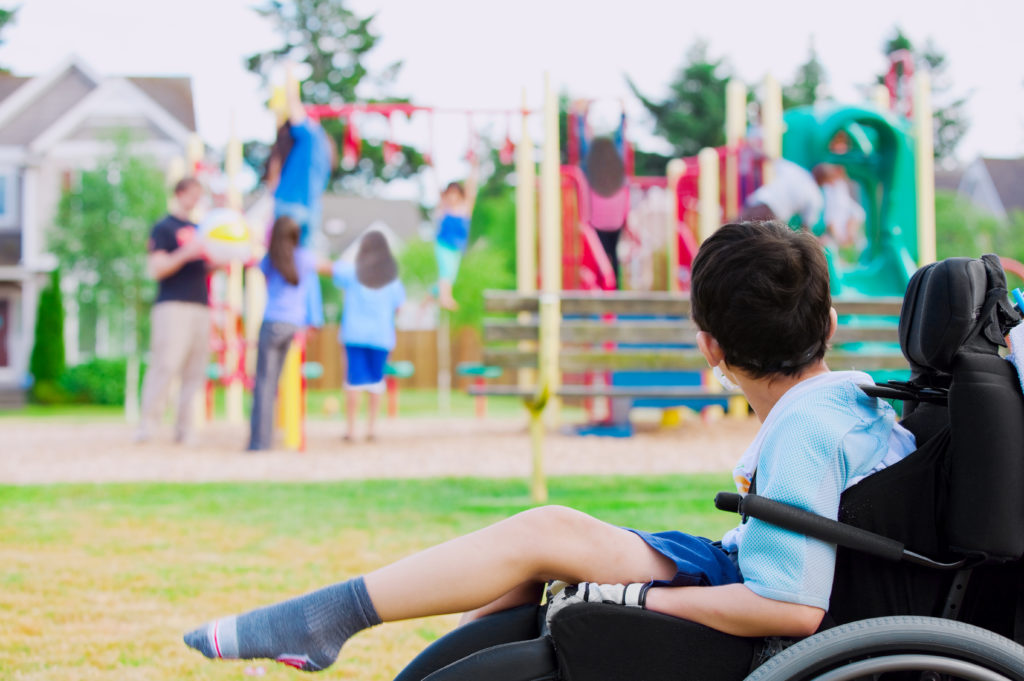Across the world, children are discriminated against due to the fact that they form part of a minority group or community. When they belong to more than one minority group, this discrimination is heightened. Child minority discrimination is driven by ethnic, racial, religious, sexual and physical differences between communities built up over long periods of time. As a result, minority children require extra protection to ensure they are not persecuted for innate characteristics.

Defining minority children
Minority children are those who have a numeric inferiority to their peers and possess their own identity. This expansive definition includes criteria including but not limited to race, ethnicity, sexual orientation, religion, physical or mental disability.
Article 27 of the International Covenant on Civil and Political Rights (ICCPR) outlines that “in those States in which ethnic, religious or linguistic minorities exist persons belonging to such minorities shall not be denied the right, in community with the other members of their group, to enjoy their own culture, to profess and practice their own religion, or to use their own language” (United Nations Human Rights Office of the High Commissioner, 1966).
The United Nations Charter and Universal Declaration of Human Rights (UDHR) prohibit discrimination and promote equality irrespective of ‘sex, sexual orientation and gender identity other status’ ((United Nations General Assembly, 1948). The Convention on the Rights of Persons with Disabilities prohibits all discrimination based on disability and applies to all persons (United Nations General Assembly, 2007).
Article 1 of the United Nations Declaration on Minorities states that minorities must present both objective factors – criteria which can be identified and attributed to an individual as part of a wider group – and a subjective, individual association to that group (UNHCR & UNICEF 2017). The Declaration also references the importance of intersectionality between minority characteristics, noting that people belonging to multiple minorities can be simultaneously discriminated against on numerous grounds (UNHCR & UNICEF 2017).
Discrimination against minority children
Minority children are discriminated against in a myriad of intersectional ways. Despite these overlaps, minority characteristics each come with their own particular vulnerabilities.
Ethnic minority children
Children from ethnic minorities are those whose ethnicity differs from the numerically superior ethnicity within an identified geographic location. Ethnicity is commonly defined as one’s cultural background and descent.
Ethnic minority children are particularly vulnerable due to majority perceptions of their communities, in particular, ethnic minorities are often ‘shunned’ or excluded from social practices where majority communities disagree with their way of living. Ethnic minorities face an even greater risk of persecution where they are perceived to possess an intersectionality with other minority characteristics such as race and religion: in instances such as these individuals may face maltreatment based on more than one personal characteristic.
Roma children in Europe
A prominent example of discrimination against minority children is the exploitation of and discrimination against Roma children in Europe. The Roma people are a community who migrated to the Balkans in the 13th century and have since faced widespread discrimination from a number of majority Europeans who view the community as ‘second-class’ and foreign to the region (Minority Rights Group, 2022). As a result of consistent discrimination and enforced segregation, the majority of Roma people live in poverty and face significant barriers to accessing education and employment (Minority Rights Group, 2020).
Children within Roma communities are particularly affected by maltreatment. These children lack resources due to the poverty within their communities, are often barred from accessing education and, in extreme cases, do not have access to basic human rights such as access to clean water and adequate shelter (Minority Rights Group, 2022).
Another common challenge faced by Roma children is that they often live a transient and nomadic way of life tied to their parents’ search for seasonal work, which further prevents children from accessing education and leaves them with responsibilities at home such as housekeeping and looking after siblings (Minority Rights Group, 2022).
Uyghur children in China

A separate pressing human rights concern involving discrimination against children based on their ethnicity is the treatment of the Uyghur community in Xinjiang, China. The Uyghur inhabit an autonomous region in China and speak a language that is closer to Turkish than Chinese: the community perceive themselves to be more Central Asian in ethnicity and culture than they do Eastern Asian or Chinese (BBC News, 2022). Despite being a community of 12 million, the Uyghurs in Xinjiang are still a minority in the Chinese-dominated province (BBC News, 2022).
Due to their minority status, Uyghurs have been targeted by individuals and the state, as they are perceived to promote and practice a culture that is at-odds with the country’s wider population. In 2002, China mandated that Uyghur names must be changed to Chinese pinyin names, and in 2015 Hotan (an oasis town in Xinjiang) reaffirmed this decision through a ban on Islamic names which are common among Uyghur populations (BBC News, 2022).
By law, children born with names in violation of these provisions can still face exclusion from social registration frameworks and thus can be restricted to access social services (BBC News, 2022). Discrimination of this kind is inconsistent with Article 9 of the Convention of the Rights of the Child (CRC) protecting the right to private and family life (United Nations General Assembly, 1989).
Beyond this discrimination, and owing to the intersectionality of minority rights, Uyghur children also face discrimination due to their religious background. The Uyghurs are predominantly Muslim, and this has seen China regulate Islamic activities in Xinjiang, such as prohibiting children from participating in religious activities and the teaching of Islam (Minority Rights Group, 2017).
Racial minority children
Where ethnicity is centered around cultural principles, race involves categorizing people based on groups of physical characteristics, predominantly skin color. Racial minority children are often discriminated against across the world due to historical patterns of abuse, systemic oppression due to racist national infrastructures and conflations of race with other minority characteristics such as religion and ethnicity.
Racial discrimination in the United States of America
The United States of America (USA) presents a minority situation of unusual diversity and complexity. There are seven key minority groupings: Latinos (including Puerto Ricans), African Americans, Asian Pacific Americans, Arab and other Middle Eastern Americans, Native Americans, Native Hawai’ians, and Inuit and Alaska Natives. At a national and state-level, these minority children are discriminated against based on the color of their skin and other physical features.
Research from 2020 shows that indigenous and black children are almost ten times as likely to experience racism as compared to white children (Moges-Gerbi, 2022). Minority children also have lesser access to high-quality educational materials and support (Darling-Hammond, 1998).
They are also more likely to be impoverished across the country, despite an array of other characteristics which could predispose them to more positive financial outcomes, such as place of residence and educational background. Indigenous and black children are less likely to benefit from healthcare and other social benefits.
Racism in South Africa
Sociopolitical events in South Africa over the last three decades have presented one of the world’s clearest examples of systemic racism through the oppressive Apartheid regime. Under apartheid, black South African children saw their rights undermined in policy and practice. Children were funneled into minority-only schools which received minimal funding or support (US Department of Justice, 1990). Children were also barred from visiting particular areas, trapping them within impoverished and often-unsafe areas and locations designated for black South Africans.
In policy, laws were also amended to enable greater punishment of black children. Black children could be detained for up to 48 hours and the absence of accessible legal aid meant this often led to incarceration regardless of whether there was an offence or not (US Department of Justice, 1990). The Apartheid regime remains one of the most pivotal examples when it comes to understanding the widespread effects of systemic racism.
Religious minority children
Children who are part of religious minority groups are targeted and mistreated due to differing beliefs and values, religious prejudice and intersectionality with other minority characteristics such as race and ethnicity. Religious minorities are particularly exposed to discrimination in non-secular states and locations that do not welcome religious diversity.
Rohingya children in Myanmar
The Rohingya are an ethnic minority in Myanmar who have faced grave abuse and discrimination leading to a humanitarian crisis due to their adherence to Islam. Rohingya Muslims have been oppressed and subjected to violence, torture, persecution, murder and extreme poverty among other grave abuses and human rights violations (Shohel, 2023). The abuse stems for religious differences between Rohingya Muslims and Buddhists within the Rakhine State (Minority Rights Group, 2019).
Due to the severity of the abuses Rohingya Muslims have been forced to flee from their homes as refugees seeking safety in Bangladesh and other neighboring and transit-accessible jurisdictions (Shohel, 2023). According to the World Health Organization, the Rohingya crisis is a “complex emergency” due to the scale of livelihood disruption and the volume of refugees (Shohel, 2023).
As a result of the migration crisis, thousands of Rohingya children find themselves in refugee camps with unreliable access to basic necessities and pressing safety concerns with some camps having experienced grave outbreaks of contagious diseases including measles, cholera and long-term effects of the COVID-19 pandemic (Shohel, 2023). Children within the Rohingya community are also deprived of their nationality due to racist citizenship laws in Myanmar, leaving many children stateless and vulnerable to persecution without a registered nationality (UNHCR & UNICEF, 2017).
Sexual minority children
Non-heterosexual children are a smaller minority that most other minority groups. As a result, sexual minority children face discrimination due to general unfamiliarity, overwhelming oppression due to a lack of community support and malicious discrimination tied to religious and ethnic beliefs.
Mental and physical health risks
Across the globe, heterosexual norms have resulted in societies being built to serve heterosexual children and adults. As a result, basic infrastructure is less accessible for sexual minority children than it is for their heterosexual counterparts.
One of the main areas in which sexual minority children are disadvantaged is physical health. Sexual minority children have less exposure to dedicated health care services, making it more dangerous to perform specific procedures such as gender transformative surgery and predisposing them to greater risks of sexually transmitted diseases as they grow into adulthood without societal support (Bada Math & Seshadri, 2013).
Emerging research also points to higher levels of emotional disorders, depression, suicidal ideation and psychological distress among sexual minorities. Sexual adolescents in particular are thought to be more prone to addiction, forced sex and extreme social exclusion due to the high and consistent levels of discrimination they face growing up (Bada Math & Seshadri, 2013).
Children with physical disabilities and mental illnesses

Children with physical disabilities and mental illnesses can be broken down into two groups: those whose disability is ‘visible’ and those who have a ‘hidden’ disability. Both categories of children primarily face discrimination due to systemic exclusion and a lack of prioritization. Children with visible disabilities often face challenges due to direct discrimination perpetrated by their peers. Disability discrimination is especially prevalent in educational environments where children are often made fun of and bullied as a result of their disability.
Children with ‘invisible’ mental illnesses or hidden physical disabilities often struggle with both indirect discrimination as well as direct discrimination. Children are indirectly discriminated against because societies are designed to support the majority. These children also face direct discrimination when their behavioral tendencies differ from the majority even though in some cases their disability is difficult to observe.
Cross-cutting issues that affect minority children
Despite the nuances of each form of minority discrimination, there are several prevailing issues that cut across the different categories.
Statelessness and forced migration
Minority children are disproportionately affected by statelessness due to the fact that discriminatory nationality laws and policies are a common tool used by oppressive states to undermine minority rights. The right to identity – and to birth registration – is a precursor to a number of other human rights. Children who are unable to gain access to a registered nationality, or those who are forced to flee their country of birth as refugees, can be rendered stateless and isolated from national support mechanisms (UNHCR & UNICEF, 2017).
Exclusionary national policies can remain effective for decades, sidelining multiple generations of minority children. An example of this case can be seen with the Makonde community, who were displaced from Mozambique to Kenya in the 1930s to work as laborers but only received legal recognition and citizenship as a national tribe in 2017 (UNHCR & UNICEF, 2017).
Indirect discrimination
Though minority children are often subjected to direct discrimination – unfavorable treatment due to their characteristic – they are particularly vulnerable to indirect discrimination. Indirect discrimination refers to the provisions, criteria and practices that disadvantage particular groups and persons and cannot be objectively justified (UNHCR & UNICEF, 2017). Minorities are especially vulnerable to indirect discrimination given national policies and ordinary regulations are designed to serve the majority.
Mental health challenges
Minority children face numerous mental health challenges due to persistent patterns of exclusion and are excluded at a societal level, within communities and amongst their peers. While this discrimination is under-researched, emerging research into particular mental health challenges in the UK tied to ethnic minorities has suggested novel and unique challenges tied to long-term abuse (Bains., Gutman, 2021).
Key documents and international legal instruments

- United Nations Convention on the Rights of the Child
- The African Charter on the Rights and Welfare of the Child
- International Covenant on Civil and Political Rights
- United Nations Declaration on the Rights of Persons Belonging to National or Ethnic, Religious and Linguistic Minorities (A/RES/47/135)
- Universal Declaration of Human Rights
- International Convention on the Elimination of All Forms of Racial Discrimination
- Declaration on the Elimination of All Forms of Intolerance and of Discrimination Based on Religion or Belief
Written by Vanessa Cezarita Cordeiro
Internally proofread by Aditi Partha
Last updated on 18 June 2023
References:
Bains, S., & Gutman, L.M. (2021, August 26). “Mental health in ethnic minority populations in the UK: developmental trajectories from early childhood to mid adolescence.” Retrieved from Journal of Youth and Adolescence, accessed on15 June 2023.
Bada Math, S., Seshadri, S. (2013, January). “The invisible ones: sexual minorities.” Retrieved from Indian Journal of Medical Research, accessed on 15 June 2023.
BBC News. (2022, May 24). “Who are the Uyghurs and why is China being accused of genocide?” Retrieved from BBC News, accessed on 15 June 2023.
Darling-Hammond, L. (1998, March 1). “Unequal opportunity: race and education.” Retrieved from Brookings, accessed on 16 June 2023.
Minority Rights Group. (2017, November). “Uyghurs.” Retrieved from Minority Rights Group World Directory of Minorities and Indigenous Peoples, accessed on 15 June 2023.
Minority Rights Group. (2019, June). “Muslims and Rohingya.” Retrieved from Minority Rights Group World Directory of Minorities and Indigenous Peoples, accessed on 15 June 2023.
Minority Rights Group. (2020, October). “Roma.” Retrieved from Minority Rights Group World Directory of Minorities and Indigenous Peoples, accessed on 15 June 2023.
Moges-Gerbi, M. (2022, November 17). “Indigenous and black children increasingly experiencing racism, new study shows.” Retrieved from CNN Health, accessed 16 June 2023.
Shohel, M. (2023, May 3). “Lives of the Rohingya children in limbo: childhood, education, and children’s rights in refugee camps in Bangladesh.” Retrieved from Prospects, accessed 15 June 2023.
U.S Department of Justice. (1990, February). “Convention on the Rights of the Child and the crisis for children in South Africa: apartheid and detention.” Retrieved from U.S Department of Justice Office of Justice Programs, accessed on 16 June 2023.
UNHCR., UNICEF. (2017). “Minority children and statelessness; Coalition on every child’s right to a nationality.” Retrieved from UNHCR and UNICEF, accessed on 14 June 2023.
United Nations General Assembly. (1948, December 10). “Universal Declaration of Human Rights.” Retrieved from RefWorld, accessed on 16 June 2023.
United Nations General Assembly. (1989, November 20). “Convention on the Rights of the Child.” United Nations Treaty Series, vol, 1577. Retrieved from RefWorld, accessed on 16 June 2023.
United Nations General Assembly. (2007, January 24). “Convention on the Rights of Persons with Disabilities.” A/RES/61/106. Retrieved from RefWorld, accessed on 16 June 2023.
United Nations Human Rights Office of the High Commissioner. (1966, December 16). “International Covenant on Civil and Political Rights.” General Assembly Resolution 2200A. Retrieved from United Nations Human Rights Office of the High Commissioner, accessed on 14 June 2023.

